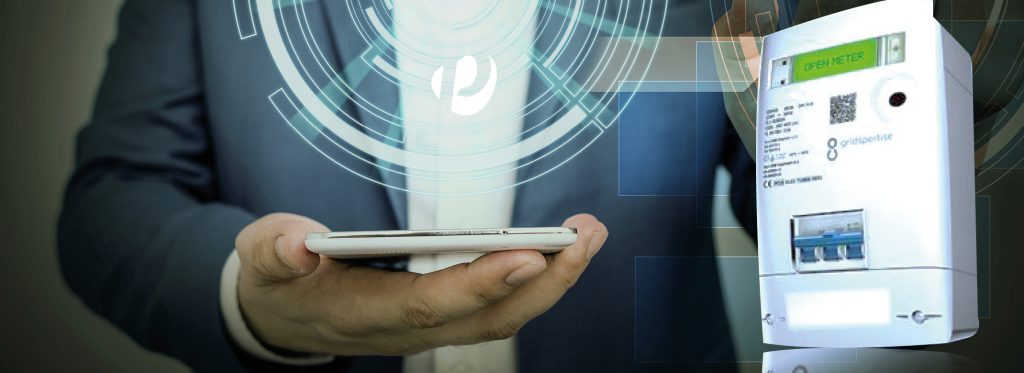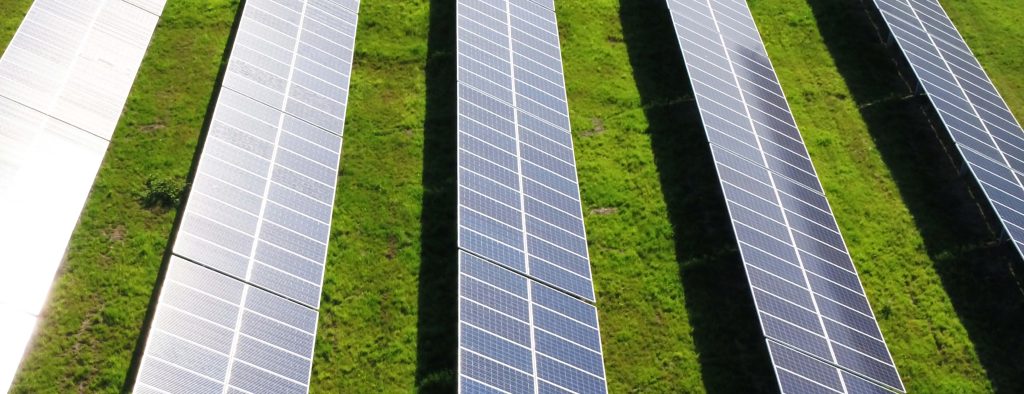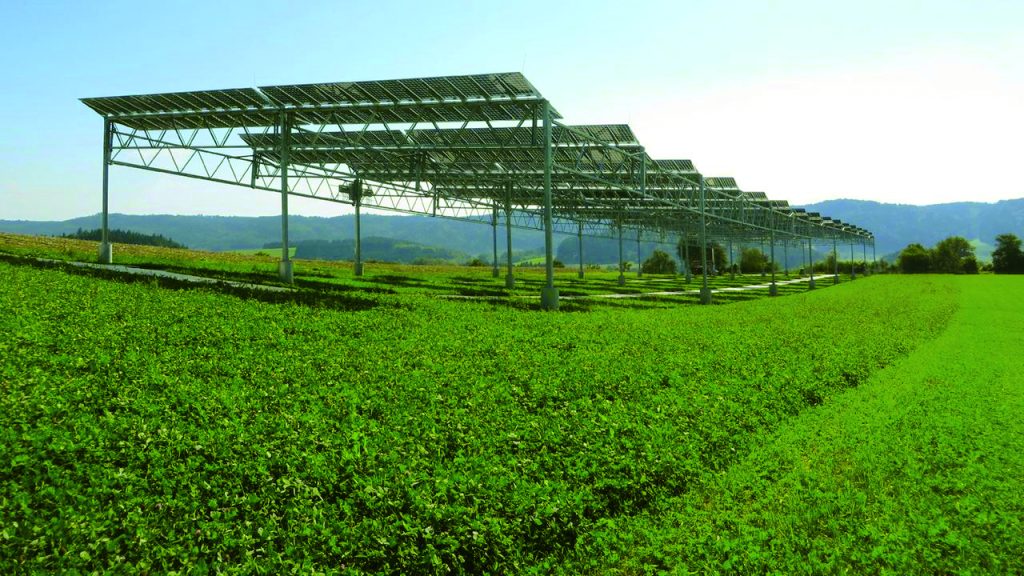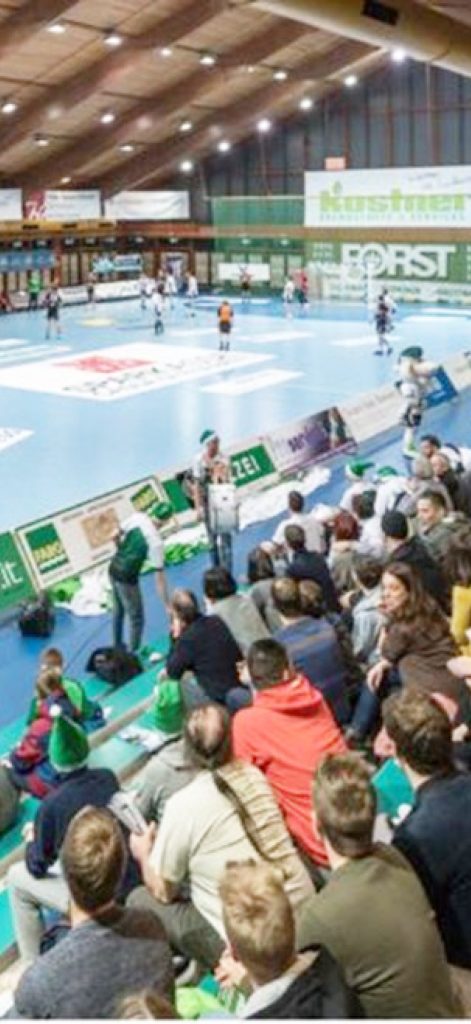
Stay tuned

A successful cooperation
21. DECEMBER – Power purchase agreement between the Rasen thermal power plant and Psaier Energies.
The biomass district heating plant in Rasen, the first of its kind in South Tyrol, has not only successfully generated thermal energy for the local area since its foundation, but has also focused on sustainable power generation from the outset. This was achieved through the combination of a photovoltaic plant and an ORC system. The energy generated is used both for the company’s own consumption and for feeding into the public grid.
The long and successful cooperation between the district heating plant management, under the leadership of President Peter Schuster, and psaier.energies was recently confirmed once again. The two companies signed an energy purchase agreement regulating the purchase of the electricity produced. This step was necessary because the all-inclusive tariff had expired. President Peter Schuster emphasised the reliability of psaier.energies as a partner and praised the favourable conditions at which the company buys energy. With this new contract, psaier.energies will include the entire production in its portfolio from the end of the year. This is an important development for both companies, which continue to focus on sustainable energy production and successful cooperation.
Source: psaier.energies

End of the protected market
19. DEZEMBER – 2024 will mark the end of the protected energy market: as of 10. January for gas and 1. July for electricity, users will have to choose a supplier in the free market. The government has decided not to extend protection.
For electricity, users leaving the protected market will automatically enter the Gradual Protection Service (STG) for three years (or until they choose a new vendor), whose allocations by auction began last 11 December and will be made public on 10 January.
Source: Qualenergia

Extra profits postponed to 2024 production
06. DEZEMBER – The issue of extra profits from renewable energy sources turned out to be extremely complex, leading the Council of State to postpone the hearing on the appeal filed by several Fer operators, as provided for in Article 15-bis of the Support Decree ter 4/2022, to the fourth quarter of 2024.
The mechanism in question concerns a two-way compensation on the price of energy produced by some Fer plants, as originally established by Article 15-bis for the period from 1 February to 31 December 2022, later extended to 30 June 2023. Last June, the Council of State had confirmed the revenue cap at least until the hearing on the merits set for 5 December. However, the appeal judges have now decided to postpone the hearing to 2024, recognising the presence of aspects potentially in conflict with European law. The ruling of the Court of Justice of the European Union on these issues is awaited.
Source: Qualenergia
5.7 thousand electric cars registered in Italy in October (+56% vs. October 2022)
06. DEZEMBER – In October, 5,700 electric cars were registered in Italy (+56% vs. October 2022). The month of October saw a growth of 56% compared to the same period of the previous year. In the first 10 months of the year, registrations of battery electric vehicles (BEVs) reached 51,513, compared to 39,395 in 2022, resulting in a market share of 3.9% and a fleet of 214,000.
Source: Solare B2B

New dispositions in the field of energy production
29. NOVEMBER – Dso Information Report Project Omimum-Observability Measure Plants >1 Megawatt.
With Resolution 540/2021/R/eel, ARERA defined the responsibilities for the development and maintenance of the technological solutions necessary for data exchange between Terna (TSO), distribution companies (DSO) and electricity production plants with a capacity equal to or greater than 1 MW (SGU Significant Grid User) connected or to be connected to the Medium Voltage grids for the safe operation of the national electricity system, the timing of implementation of data exchange and the necessary adjustments by producers, and the methods for covering costs.
According to the new regulation, the operators of production plants with a power output equal to or greater than 1 MW are responsible for the installation and maintenance of the field equipment called “Central Plant Controller” (CCI) and the related communication system, necessary for data exchange in accordance with Terna’s Grid Code, according to the modalities indicated in the updated Annexes “O” and “T” to the CEI 0-16 standard.
Consequently, DSOs are obliged to adapt their instruments and systems for the implementation of Observability. Adaptation to the standard therefore means managing a new TLC, hardware and system infrastructure capable of collecting CCI measurements and sending them to Terna.
With the aim of creating new and more high-performance solutions, to be included in its services to be offered to electricity distributors also with the aim of reducing the per-capita costs of individuals, psaier.energies has worked to identify an innovative and highly technological solution for the centralised management of communications from several CCIs to TERNA.
Without territorial and/or geographical limits, in full compliance with the standard and using secure protocols, psaier.energies is now able to make available to DSOs who request it, the first complete solution capable of enabling observability in accordance with ARERA resolution 540/2021/R/EEL.
psaier.energies‘s proposal to DSOs falls within the context of the CEI 0-16 standard, annexes O and T, and requires that all production plants connected to medium voltage above 1MW, where the CCI equipment is present, be able to communicate with the competent DSO through the IEC61850 protocol secure according to IEC62351, and then redirect this measurement to Terna.
Omimum Project powered by psaier.energies

For information send us an e-mail here
Source: psaier.energies

Record year for photovoltaics
21. NOVEMBER – In the first three quarters of 2023, new installed capacity in our country reached 3,548 MW, a significant increase of 1,909 MW compared to the same period in 2022, corresponding to a 116% increase.
In September alone, 424 MW of PV systems were installed in Italy, distributed over 27,249 systems, representing an increase of 28 MW compared to August.
On 30 September 2023, the total photovoltaic power in Italy reached 28,596 MW, distributed over a total of 1,506,558 plants. Over a period of one year, starting at the end of September 2022, photovoltaic capacity grew by 4,392 MW.
Source: Qualenergia

100 Top Companies in Southtyrol
15. NOVEMBER – As a leading international hydropower generation company and European producer of energy from renewable sources we are proud to present our latest achievement: Energy.dis by Psaier.energies is ranked 34th in the ranking of the 100 Top Companies in Southtyrol, presented by WIFO on www.wifo.bz.it, in the general category while for the Environment and Energy sector we are ranked 7th! We applaud the outstanding work of the PsaierenergiesTeam for these results!
Source: psaier.energies

Green, smart & easy: the rapid mobile charger station
10. NOVEMBER – At the Julius Durst Street in Brixen/Bressanone, we tested the future mobile fast-charging station in cooperation with leading German companies. We want to be the right choice for every company interested in innovative, smart and advanced charging stations. Book an appointment to learn more about our services and customised solutions. Click here
Source: psaier.energies

Psaier Smart Metering 2G: Live Presentation by Psaier.energies
Monday 27.11.2023. Psaier energies is going to organise a Live Presentation for its customers and interested parties on the topic of Smart Metering 2G. The following topics will be presented: Legislation and replacement plan, overview of the Psaier.Energies smart metering solution and an interactive demonstration of the Beat Suite meter reading system. Interested parties can send an e-mail to event@psaierenergies.it.
Source: psaier.energies

E-mobility: Italy make great strides
02. NOVEMBER – Italy is making great strides in the installation of electric vehicle charging stations, with a notable increase of more than 10,000 public charging points installed in the first nine months of 2023, reaching the highest level to date. Nationwide, the total number of charging points rose to 47,228 by September, marking a 44 per cent increase over the same period in 2022.
Among the regions, Lombardy stands out with more than 8,000 public charging points, followed by Piedmont, Veneto and Lazio, each with more than 4,000 points. On motorways, the charging network is also increasing, with 851 charging points as of 30 September 2023, representing an increase of 541 points over the previous year. These points are distributed in almost a third of Italy’s service areas, with about 80 per cent of them offering more than 43 kW and 59 per cent more than 150 kW.
However, despite efforts to improve the charging infrastructure, there is still a considerable lag in sales of ‘pure’ electric cars in Italy. The market share of such vehicles remained below 4% in the period January-September 2023. This suggests the need for further incentives and measures to actively promote the adoption of electric vehicles and reduce the environmental impact of fossil-fuelled vehicles.
Source: Qualenergia

Photovoltaic system: Goodbye production meter
16. OCTOBER – On 3 August 2023, ARERA (the Energy, Networks and Environment Regulatory Authority) published Resolution 361/2023/R/EEL, which concerns the first changes to the Testo Integrato Connessioni Attive (TICA). In particular, ARERA has decided to simplify the connection procedure by introducing a major novelty, also valid for ongoing connection practices: it will no longer be necessary to install a meter for the electricity produced for plants with a nominal power up to 20 kW that meet all of the following conditions
- They are not subject to the excise regime;
- They consist of a single section or, in the case of several sections, these follow the same commercial sales regime;
- They do not access the incentives provided by the GSE that require the measurement of the electricity produced.
The grid operator no longer has to travel to the site to activate the photovoltaic system, reducing the connection procedure by at least 10 working days. Based on the experience of the last few years, considering the overload in which grid operators have found themselves, in some cases the time advantage extends well beyond the two weeks stipulated by law. Currently in the consultation phase, these simplifications will become effective as of 1 January 2024.
Source: psaier.energies

Slight increase in energy prices in September
16. OCTOBER – Increase in energy prices in September According to data from GME (Gestore dei Mercati Energetici) reported in its latest newsletter of October 2023, the National Single Price (PUN) in Italy had already recorded a slight monthly average growth, reaching €115.70/MWh, with an increase of €3.81/MWh compared to August.
This trend was also observed in other major European markets, except for France. The trend of the National Single Price (PUN) develops in a context characterized by a significant increase in purchases (MGP: 23.5 TWh). This increase in purchases is offset by a decrease in sales from renewable sources. Sales of energy from renewable sources are declining, particularly solar energy. As a result, the market share of gas (46.6%) and coal (4.4%) is increasing, while the shares of solar (11%), hydroelectric (20.5%), and wind (8.1%) energy are decreasing.
Source: Gestore dei Mercati Energetici (GME)

New discoveries in the field of e-mobility
09. OCTOBER – The latest analysis clearly indicates that electric vehicles are the clear winners when it comes to reducing CO2 emissions in the transportation sector. 100% electric vehicles are considered the most efficient choice from an energy and environmental perspective, as they have the lowest overall emissions throughout their entire lifecycle (see also BloombergNEF and the European Environment Agency’s analysis).
However, misinformation and skepticism regarding electric mobility still persist. Many people mistakenly argue that electric cars are harmful to the environment because they use energy from fossil fuels (such as coal in China) and because batteries require large amounts of raw materials and are difficult to dispose of. It is crucial to discuss emissions in the life cycle assessment (LCA), not just zero emissions at the tailpipe, as many criticisms of plug-in hybrid cars focus on different stages of the production chain, including battery manufacturing.
Analysts have considered every phase of the production process, in addition to the vehicle’s operation. This includes the production of the car’s body, assembly of the powertrain, maintenance, as well as emissions related to fuel and electricity, and the production of batteries for battery electric vehicles (BEVs). As a result, the total lifecycle emissions of an electric model are around 39 tonnes of CO2 equivalent, in contrast to almost 85 tonnes for an internal combustion engine vehicle.
Text: psaier.energies

Electricity bill increase of 18.6%
09. OCTOBER – ARERA has updated the electricity rates for the months from October to December, resulting in an increase of 18.6% for a typical protected family (with an annual consumption of 2,700 kWh and a contracted power of 3 kW).
The price increase is due to the energy component, which is expected to rise. However, the electricity expenditure for the typical family in the current year (from January 1st to December 31st, 2023) will be approximately 889.60 euros, marking a -32.7% decrease compared to the equivalent 12 months of the previous year (January 1st – December 31st, 2022).
Source: Qualenergia

Full-time employees in the photovoltaic industry progressing
29. SEPTEMBER – In 2022 there were 648 thousand full-time employees in the photovoltaic sector in the EU countries. This figure marks a growth of 39 per cent compared to 466,000 workers in 2021. This is the result of the study ‘EU Solar Jobs Report 2023’ by SolarPower Europe.
Of the total figure, 281 thousand, i.e. 43%, refer to direct jobs, while the remainder (367 thousand) are indirect jobs. Eighty-four per cent of the total employment (542 thousand) is in photovoltaic plant development activities. This is followed by jobs in O&M (8.1 per cent), which for the first time exceeds the figure for jobs in manufacturing (7.4 per cent). The figure for the treatment of end-of-life modules, on the other hand, is 0.8%.
The photovoltaic industry will continue to offer many and, above all, secure jobs in the future.
Source: Solare B2B

The expansion of the electronic charging station infrastructure continues
21. SEPTEMBER – According to the Provincial Statistics Institute (ASTAT), more than 100 new publicly accessible charging stations have been built and put into operation in South Tyrol since 2021. In total, more than 318 charging stations are available for the growing number of electric vehicles. Convenient and easily accessible charging is an important prerequisite for the further expansion of electric mobility.
The Autonomous Province of Bozen/Bolzano is also promoting the purchase of charging stations: companies can count on a contribution of up to 70 per cent, private individuals up to 80 per cent, with a maximum limit of EUR 1.000.
Text: psaier.energies

Energy company: stay up to date
Extension of end of protected electricity market until 01.04.2024.
21. SEPTEMBER – The energy market is divided into two large parts: a protected market and a free market. In the protected market, the regulatory authority ARERA sets the supply conditions and prices.
In the free market, on the other hand, the customer chooses his electricity supplier independently.
The Italian government initiated the abolition of the protected market. The protected market was thus successively abolished. The final date for families is 01 April 2024. The original date of 10 January 2024 was extended by a further three months at the most recent meeting of the national authority. Those who do not switch to the free market by then will automatically be assigned to a national provider who has won the tender provided for this purpose.
Compare the different tariffs for energy here, following the link below:
Text: psaier.energies

Successful sale of two construction-ready solar power plants from ENCAVIS AG
18. AUGUST – The successful sale of two construction-ready solar parks belonging to the psaier.energies development pipeline was recently concluded. The German company Encavis AG, a well-known wind and solar farm developer, purchased the two construction-ready solar farm projects in the region of Lazio, about 100 km north-west of Rome, with a total capacity of 93 megawatts (MW).
The solar park in Montalto di Castro has a capacity of 55 MW, while the solar park in Montefiascone has a capacity of 38 MW. Both photovoltaic plants will generate approximately 154 GWh of renewable energy per year. Both parties declared themselves extremely satisfied after the sale, thus confirming the already existing cooperation in the photovoltaic sector.
Source: psaier.energies

Trani
11. AUGUST – Psaier.energies announced the start of work on the Trani solar park in the province of Barletta – Andria – Trani (BT), which will have a capacity of 6.5 MW.
The project is being developed through Aton Roof Ltd, a special purpose company wholly owned by the company.
The company through its subsidiaries managed all phases of the project and will be responsible for the operation, maintenance and sale of the energy produced. A group of Italian companies has been appointed as general contractor for the construction and execution.
The plant will be built on former industrial land on a total area of 88,000 m², which is equivalent to more than 10 football fields.
The completion of the photovoltaic park is planned for the autumn of 2023 and will follow a work schedule marked by clearly defined phases such as the construction of the internal roads and fencing, the installation of the structures supporting the solar panels, and the work on the network works.
The construction site will involve up to 50 people and will see the installation of around 12 thousand PV panels with a nominal power of 555 watts, as well as more than 50 sting inverters. The photovoltaic system will have sufficient producibility to supply electricity to the equivalent of 4 thousand families.
“We focus on Italy in the development and construction of photovoltaic plants, because we find excellent prerequisites there. We want to play an important role in the renewable energy market and start on a concrete path towards decarbonisation,” said Psaier Eugen, CEO of psaier.energies Ltd. “Psaier.energies is continuing to invest strongly in Italy, where we have a pipeline of over 1 GW of projects.
Source: psaier.energies
New decree on guarantees of origin in force
20. JULY – The Ministry of the Environment and Energy Security has published the new decree on guarantees of origin (GO). The decree establishes the modalities for the issuance, transfer, recognition and cancellation of guarantees of origin of energy production from renewable sources, referring to electricity, gas, including biomethane, hydrogen, thermal and/or cooling energy. The decree also regulates how GOs are to be used by energy suppliers, checks on the accuracy, reliability and authenticity of guarantees issued by other Member States, the use of proceeds by the GSE, and the information to be given to end customers on the composition of the energy mix. The new National Registry of Guarantees of Origin has also been introduced, which will be used to manage the qualification of plants, to keep the ownership accounts of operators who sell and purchase GOs, and to issue, transfer and cancel GOs. The GSE issues GOs to the producer on a monthly basis, which are valid for 12 months. Each GO corresponds to a quantity of 1 MWh of energy.
Source: psaier.energies
Renewable sources reach 39.5 GW
20. JULY – According to data recently published by TERNA, the installed capacity of renewable sources in Italy is almost 40 GW. In June, 44.3 per cent of the national electricity consumption was thus covered. In the first half of 2023, the increase in new installations was about 2.5 GW, significantly higher than last year’s 1.4 GW increase. The composition of energy production from renewable sources in Italy is as follows: 43.5% is generated by hydroelectricity, 31.4% by photovoltaics, 12.1% by biomass, 9.2% by wind power, and finally 3.8% by geothermal energy.
Source: Qualenergia
End of the protected electricity market
12. JULY – The electricity market is divided into two major parts: a protected market and a free market. In the protected market, the regulatory authority ARERA sets the supply conditions and prices. In the free market, on the other hand, customers choose their electricity supplier independently. The Italian government initiated the abolition of the protected market. The protected market was subsequently abolished. For households, the deadline is 10 January 2024: anyone who does not switch to the free market by that date will automatically be assigned to a national supplier who has won the tender provided for that purpose. Before switching electricity tariffs, it is worth having a look at the ARERA comparison portal: ARERA – The Offers Portal (https://www.arera.it/it/portaleofferte.htm)
Source: psaier.energies
Psaier
Electromobility

10. JULY – Electromobility is inexorably advancing. In the first half of 2023, almost 8,500 new public charging points were put into operation in Italy. More than 650 fast-charging stations have also been installed on motorways. In total, as of 30.06. there are about 45,000 charging points in Italy, more than half of them in the North.
Most charging points are located in Lombardy, followed by Piedmont and Veneto. Finally, there has also been a strong increase in the number of wallboxes installed in the private sector, reflecting the high interest in electric mobility.
source: qualenergia
Psaier
Battery storage in combination with a photovoltaic system is becoming increasingly popular in Italy

10. JULY – According to a press release by ‘Italia Solare’, battery storage systems in combination with photovoltaic systems are becoming increasingly popular in Italy. To date, more than 310,000 battery storage systems with a total capacity of 3,946 MWh have been installed. Most are small systems in the private sector, with a capacity of < 20 kWh, while only a few larger systems have been put into operation in the industrial and commercial sector. The regions of Lombardy, Veneto and Emilia-Romagna have the largest number of installed storage batteries, with lithium-ion batteries used for the most part. The advantage of a battery storage system is that the energy produced during the day can be better utilised in the evening and at night. As a result, the electricity bill is significantly lower because only a small amount of energy needs to be taken from the grid. Finally, the installation of a battery storage system can benefit from the 50% tax depreciation. Battery storage systems play a central role in the energy transition, as the intermediate storage of green energy from photovoltaic systems allows it to be used locally, thus easing the burden on the public grid.
source: qualenergia
Psaier
Energy Transition, big steps forward

09 JULY – In the months of January to May, photovoltaic installations with a total capacity of 1,853 MW have been connected to the public grid in Italy. Compared to the same period last year, this is an increase of 125% or 1,030 MW.
The majority are plants with a capacity of less than 12 kWp. In Italy, the installed capacity of photovoltaic systems thus amounts to almost 27 GW. The energy transition is therefore progressing in great strides
source: qualenergia
Psaier
Photovoltaics in Europe

06 JULY – According to the latest report of the European Union’s statistical office (Eurostat), electricity production from photovoltaics in Europe will increase by about 29% in 2022.
The European energy mix will therefore consist of approximately 7.3% clean photovoltaic electricity. There was a significant drop in nuclear power due to prolonged maintenance work on control centres, as well as in hydropower production due to a prolonged drought. Overall, energy production from fossil fuels increased by 3.3% compared to 2021, while that from renewable sources increased by 0.1%.
source: qualenergia
Psaier
Psaier.energies a strong and trusted partner

28 JUNE – Safe investments and informed financing are our strengths. Our transparent decision-making processes and the integrity of our business relationships ensure sustainable growth.
We are consistently rated in line with international best practices and are proud to announce that our rating has been improved and confirmed.
Psaier
Psaier.energies certification

28. JUNI: Erfolgreiche Zertifizierung nach ISO 9001:2015.
In the course of the surveillance audit conducted according to ISO 9001:2015 quality certification by Quality Austria – Trainings, Zertifizierungs und Begutachtungs GmbH, certification was renewed for all psaier.energies Group companies. The audit focused, on the one hand, on the evaluation of the management system, measurement, analysis and improvement of the system and, on the other hand, on the identification of strengths and potential for improvement as well as hidden risks and opportunities.
Psaier
Green energy with agrovoltaics

28. JUNI: Eine Agrovoltaik-Anlage ist in der Regel eine Freiflächenanlagen, die mit einer landwirtschaftlichen Produktion funktional kombiniert wird. Dabei werden die Solarmodule auf Gestellen in Höhen von 4 bis 5m über dem Boden bzw. der Anbaufläche horizontal montiert, sodass sie möglichst viel Sonnenstrahlung aufnehmen können und unter der Anlage eine maschinelle Bearbeitung der Ackerfläche (Pflügen, Saat, Ernte etc.) dennoch möglich ist.
However, this technology, still in its early stages, has great potential to provide sufficient green energy in the future due to the dual use of the land. In addition to the dual use of the land, the advantages of this technology potentially include increased agricultural yields through shading or the prevention of drying out or even protection from heavy rain.
Then again, there is a certain loss of space due to photovoltaic scaffolding and a loss of yield due to the modules, as not enough light and water reach the plants. Furthermore, the installation of these systems also entails some intervention in the landscape and can therefore affect the aesthetics of tourist areas. The balancing of the aforementioned advantages and disadvantages is the subject of various experimental and research installations, which psaier.energies wants to pursue.

Agrovoltaic
The new Scada panels CCI
12. JUNE – New Control Panels have recently been purchased because the psaier.energies Group is always up to date with the latest new legal provisions in the field of IT-Solutions and electricity.
Resolution 540/21/R/el defines the scope of application of the CCI (Central Plant Controller), indicating the obligation to install it for production plants with a nominal capacity greater than, or equal to, 1 MW and connected to MV.
The system of this plant performs the MT observability function according to IEC 016. It facilitates future adjustment to optional PF2 functionality (such as voltage regulation) and optional PF3 functionality (such as services for the dispatching services market) The system consists of a Secure RTU (Remote Terminal Unit), a Synchronisation Module with GPS receiver and a 24V protected power supply with optional management of a backup battery for internal UPS function.

PPA – Switching to renewables will save companies from a loop of rising energy prices.
10. MARCH – Psaier.energies takes an innovative approach and offers long-term electricity supply contracts – so-called “Green Power Purchase Agreements (PPA)” at fixed prices to industry and trade, possibly in combination with energy communities.
“Recently, we once again succeeded in concluding a long-term PPA contract with a medium-sized company from the food sector in the Eisacktal region,” explains Lukas Edenhauser. “A WIN-WIN situation for all concerned: Companies receive electricity from renewable energy sources at reliable prices, while plant operators can realise their wind and photovoltaic parks beyond fixed feed-in tariffs and thus further promote the expansion of renewable energies.”
The psaier.energies group, which has been active in the field of renewable energies for over 20 years, has set itself the goal of successfully bringing energy producers and end consumers together. The company, which is based in Bressanone, Trento and Munich, relies on long-term power purchase agreements or “PPA contracts”, which have become indispensable for the procurement of electricity and decarbonisation.
Do you want more? info@psaierenergies.it

Sponsorday SSV Brixen Handball
01. APRIL – Sponsorday SSV Brixen Handball. National Championships SSV Brixen Südtirol Handball vs Raimond Sassari. Psaier.energies wants to promote youth and sport in South Tyrol. Sport is energy and we want to be a part of it. We support our handball team SSV Brixen as one of the sponsors.

Mission
The world of renewable energy is constantly evolving and we are always up to date.
#renewableenergies #electricity tariffs #electricityprice #technology #sponsoring #partnerships
Archiv 2022

Psaier Smart Metering 2G
An event organised on 7 October 2022 in Bolzano at the Four Points by Sheraton, to present the Demo – Enel Beat Suite with the presence in the room of experts from Gridspertise and Enel Grid DH. On this day, the partnership between Psaier Energies & Gridspertise was made official.

Sponsorday SSV Brixen Handball
MAY – National Championships Serie A BERETTA, SSV Brixen Südtirol Handball vs. Junior Fasano.
Psaier.energies wants to promote youth and sport in South Tyrol. Sport is energy and we want to be a part of it. We support our handball team SSV Brixen as one of the sponsors.
